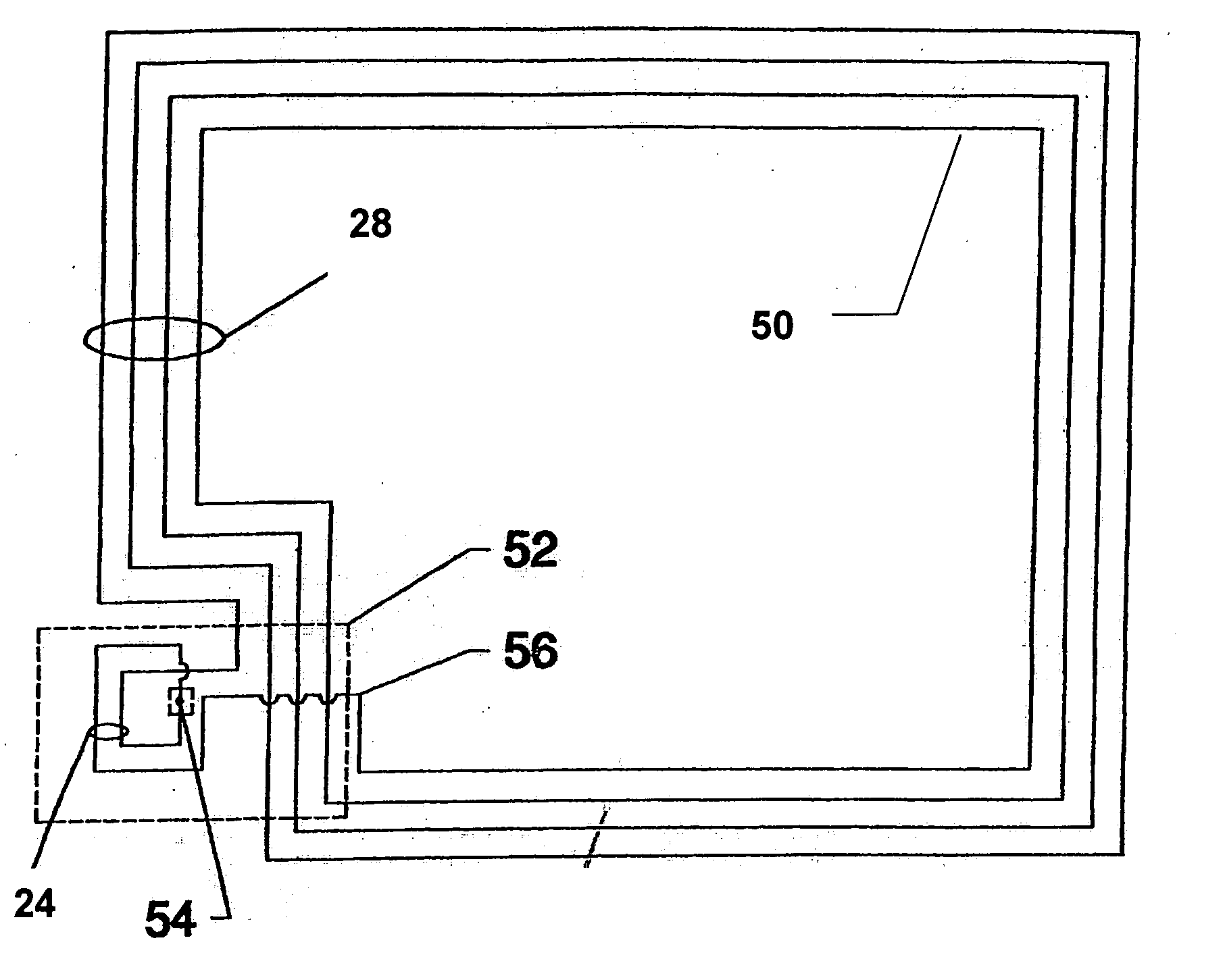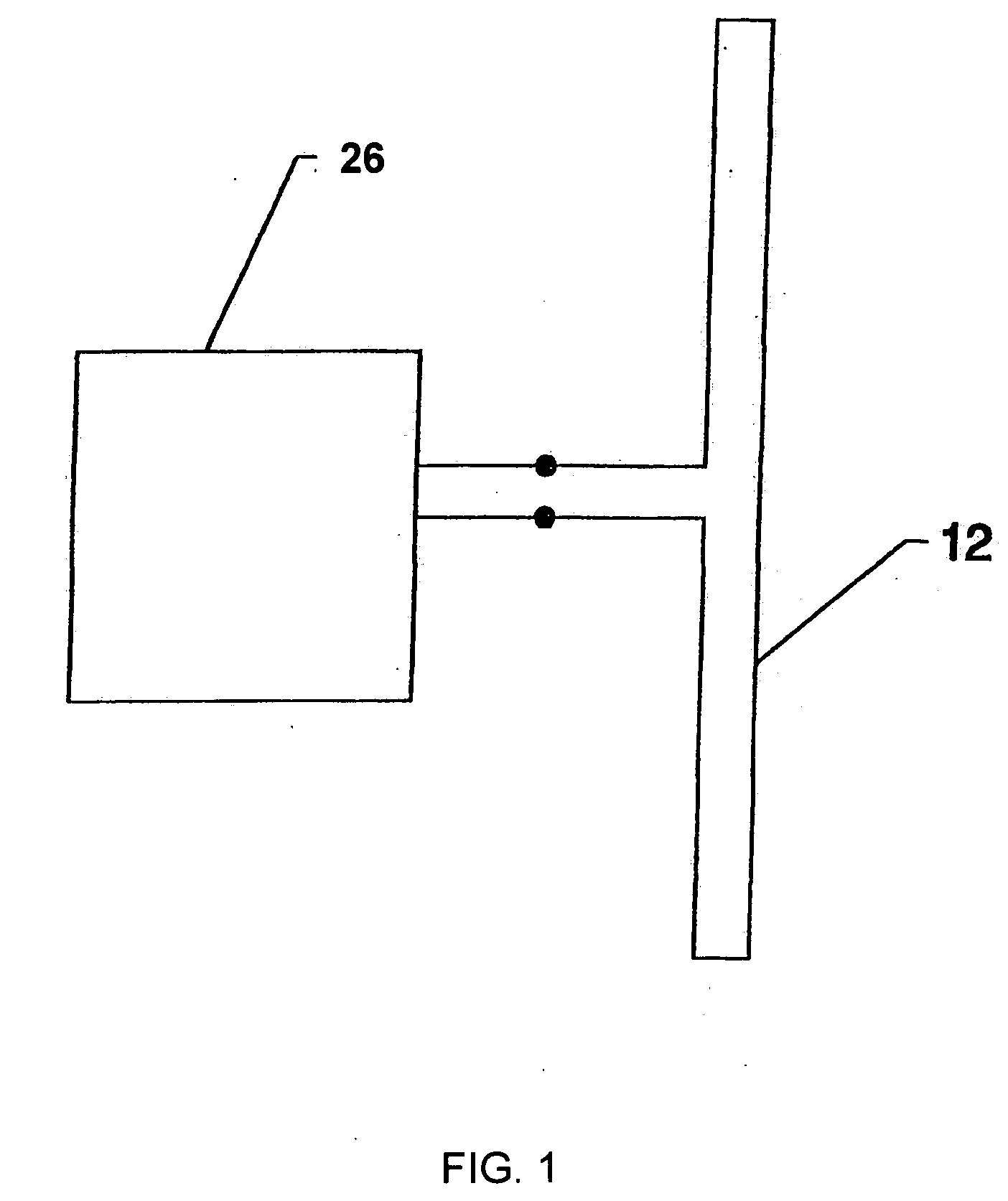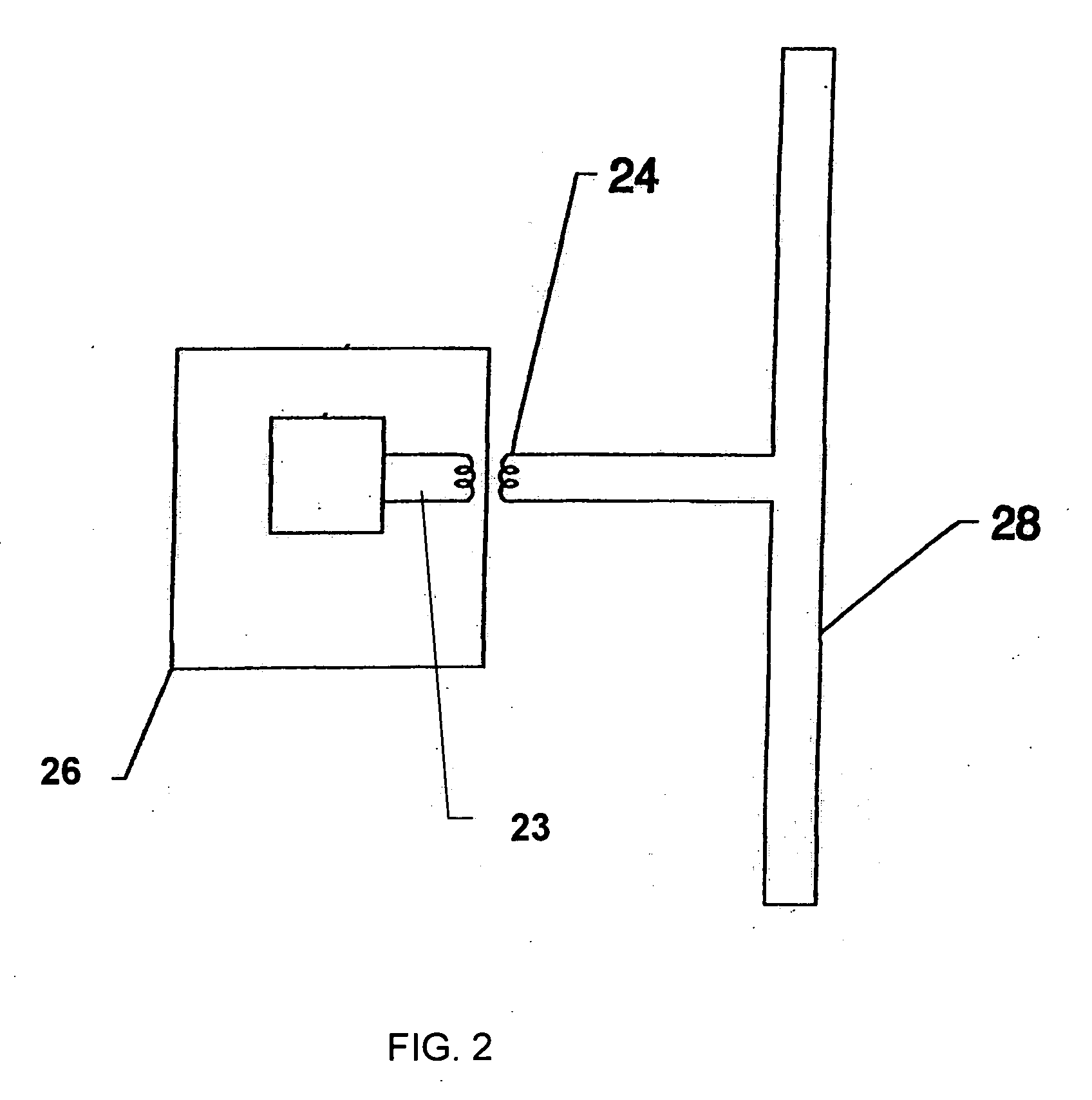Process for manufacture of novel, inexpensive radio frequency identification devices
a radio frequency identification and inexpensive technology, applied in the direction of mechanical actuation of burglar alarms, near-field systems using receivers, instruments, etc., can solve the problems of insufficient chip alignment, high cost, time-consuming and environmental hazards, and current manufacturing using photolithographic methods
- Summary
- Abstract
- Description
- Claims
- Application Information
AI Technical Summary
Problems solved by technology
Method used
Image
Examples
examples
[0035] The examples described below indicate how the individual constituents of the preferred compositions and the conditions for applying them function to provide the desired result. The examples will serve to further typify the nature of this invention, but should not be construed as a limitation in the scope thereof which scope is defined solely in the appended claims.
example i
[0036] A 25 micron thick PET film was coated with Saran® resin #F-276 (DOW) to a nominal thickness of 1 micron. Parmod Silver Toner E-43 (Parelec LLC, Rocky Hill, N.J.) was mixed to 1.5% by weight concentration to a conductivity of 5 pico siemens per cm. This toner was then imaged on a standard Electrox electrostatic printing plate (Dynachem #5038 dry film etch resist, exposed to a level of 250 mj / cm2). The silver toner image was transferred to the Saran coated PET film. The toner mage was dried at about 40° C.
[0037] Next a silicon chip thinned to 10 microns by means practiced by Virginia Semiconductor Inc. of Richmond, Va. was placed, active side down onto the silver toner image. The assembly of silicon chip on toner image on coated PET film was heated to 125° C. for two minutes. Good conductivity of the silver was achieved with excellent bonding of the chip to the silver.
example ii
[0038] A three layer substrate was prepared using the same techniques of Example 1. A Saran coated PET film was imaged with Parmod toner and thermally cured into a useful conductive pattern. A dielectric “cross over” pattern of a Saran toner was printed and reflowed into a pin hole free layer. Note, the electrode pads of the conductive pattern of the first layer are left uncovered by the Saran cross-over layer. A second metal layer was printed on the Saran layer interconnecting the electrodes.
[0039] A portion of the pattern of the first layer and the pattern of the second metal layer were configured to form a coil pattern (“secondary winding”).
[0040] A dot of thermally or pressure activated adhesive was applied to the “secondary winding” region of the substrate and a silicon die with a “primary winding” contained on its surface was accurately placed on this adhesive. Bonding is completed by heat or pressure.
PUM
| Property | Measurement | Unit |
|---|---|---|
| Length | aaaaa | aaaaa |
| Thickness | aaaaa | aaaaa |
| Thickness | aaaaa | aaaaa |
Abstract
Description
Claims
Application Information
 Login to View More
Login to View More - R&D
- Intellectual Property
- Life Sciences
- Materials
- Tech Scout
- Unparalleled Data Quality
- Higher Quality Content
- 60% Fewer Hallucinations
Browse by: Latest US Patents, China's latest patents, Technical Efficacy Thesaurus, Application Domain, Technology Topic, Popular Technical Reports.
© 2025 PatSnap. All rights reserved.Legal|Privacy policy|Modern Slavery Act Transparency Statement|Sitemap|About US| Contact US: help@patsnap.com



